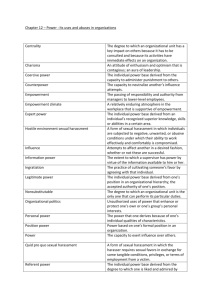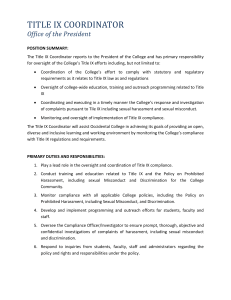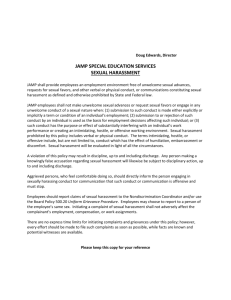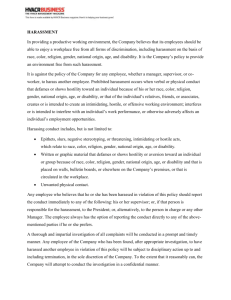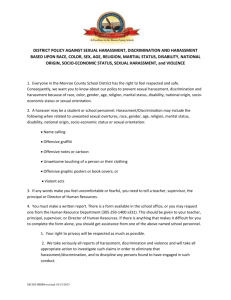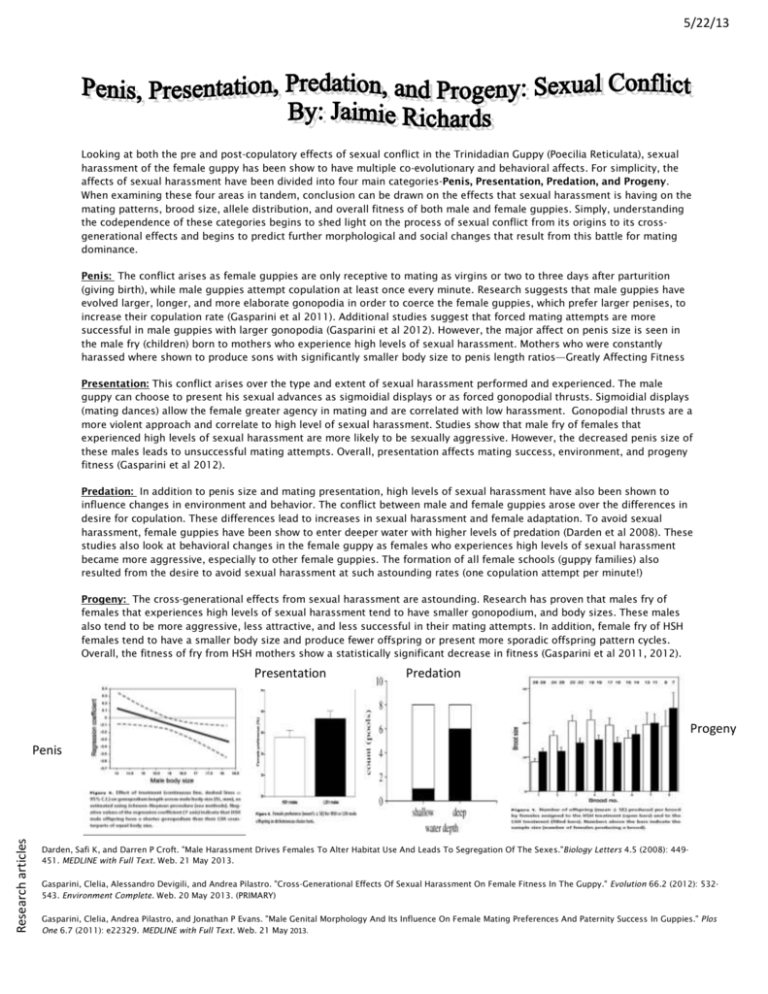
5/22/13
Looking at both the pre and post-copulatory effects of sexual conflict in the Trinidadian Guppy (Poecilia Reticulata), sexual
harassment of the female guppy has been show to have multiple co-evolutionary and behavioral affects. For simplicity, the
affects of sexual harassment have been divided into four main categories-Penis, Presentation, Predation, and Progeny.
When examining these four areas in tandem, conclusion can be drawn on the effects that sexual harassment is having on the
mating patterns, brood size, allele distribution, and overall fitness of both male and female guppies. Simply, understanding
the codependence of these categories begins to shed light on the process of sexual conflict from its origins to its crossgenerational effects and begins to predict further morphological and social changes that result from this battle for mating
dominance.
Penis: The conflict arises as female guppies are only receptive to mating as virgins or two to three days after parturition
(giving birth), while male guppies attempt copulation at least once every minute. Research suggests that male guppies have
evolved larger, longer, and more elaborate gonopodia in order to coerce the female guppies, which prefer larger penises, to
increase their copulation rate (Gasparini et al 2011). Additional studies suggest that forced mating attempts are more
successful in male guppies with larger gonopodia (Gasparini et al 2012). However, the major affect on penis size is seen in
the male fry (children) born to mothers who experience high levels of sexual harassment. Mothers who were constantly
harassed where shown to produce sons with significantly smaller body size to penis length ratios—Greatly Affecting Fitness
Presentation: This conflict arises over the type and extent of sexual harassment performed and experienced. The male
guppy can choose to present his sexual advances as sigmoidial displays or as forced gonopodial thrusts. Sigmoidial displays
(mating dances) allow the female greater agency in mating and are correlated with low harassment. Gonopodial thrusts are a
more violent approach and correlate to high level of sexual harassment. Studies show that male fry of females that
experienced high levels of sexual harassment are more likely to be sexually aggressive. However, the decreased penis size of
these males leads to unsuccessful mating attempts. Overall, presentation affects mating success, environment, and progeny
fitness (Gasparini et al 2012).
Predation: In addition to penis size and mating presentation, high levels of sexual harassment have also been shown to
influence changes in environment and behavior. The conflict between male and female guppies arose over the differences in
desire for copulation. These differences lead to increases in sexual harassment and female adaptation. To avoid sexual
harassment, female guppies have been show to enter deeper water with higher levels of predation (Darden et al 2008). These
studies also look at behavioral changes in the female guppy as females who experiences high levels of sexual harassment
became more aggressive, especially to other female guppies. The formation of all female schools (guppy families) also
resulted from the desire to avoid sexual harassment at such astounding rates (one copulation attempt per minute!)
Progeny: The cross-generational effects from sexual harassment are astounding. Research has proven that males fry of
females that experiences high levels of sexual harassment tend to have smaller gonopodium, and body sizes. These males
also tend to be more aggressive, less attractive, and less successful in their mating attempts. In addition, female fry of HSH
females tend to have a smaller body size and produce fewer offspring or present more sporadic offspring pattern cycles.
Overall, the fitness of fry from HSH mothers show a statistically significant decrease in fitness (Gasparini et al 2011, 2012).
Presentation
Predation
Progeny
Research articles
Penis
Darden, Safi K, and Darren P Croft. "Male Harassment Drives Females To Alter Habitat Use And Leads To Segregation Of The Sexes."Biology Letters 4.5 (2008): 449451. MEDLINE with Full Text. Web. 21 May 2013.
Gasparini, Clelia, Alessandro Devigili, and Andrea Pilastro. "Cross-Generational Effects Of Sexual Harassment On Female Fitness In The Guppy." Evolution 66.2 (2012): 532543. Environment Complete. Web. 20 May 2013. (PRIMARY)
Gasparini, Clelia, Andrea Pilastro, and Jonathan P Evans. "Male Genital Morphology And Its Influence On Female Mating Preferences And Paternity Success In Guppies." Plos
One 6.7 (2011): e22329. MEDLINE with Full Text. Web. 21 May 2013.




